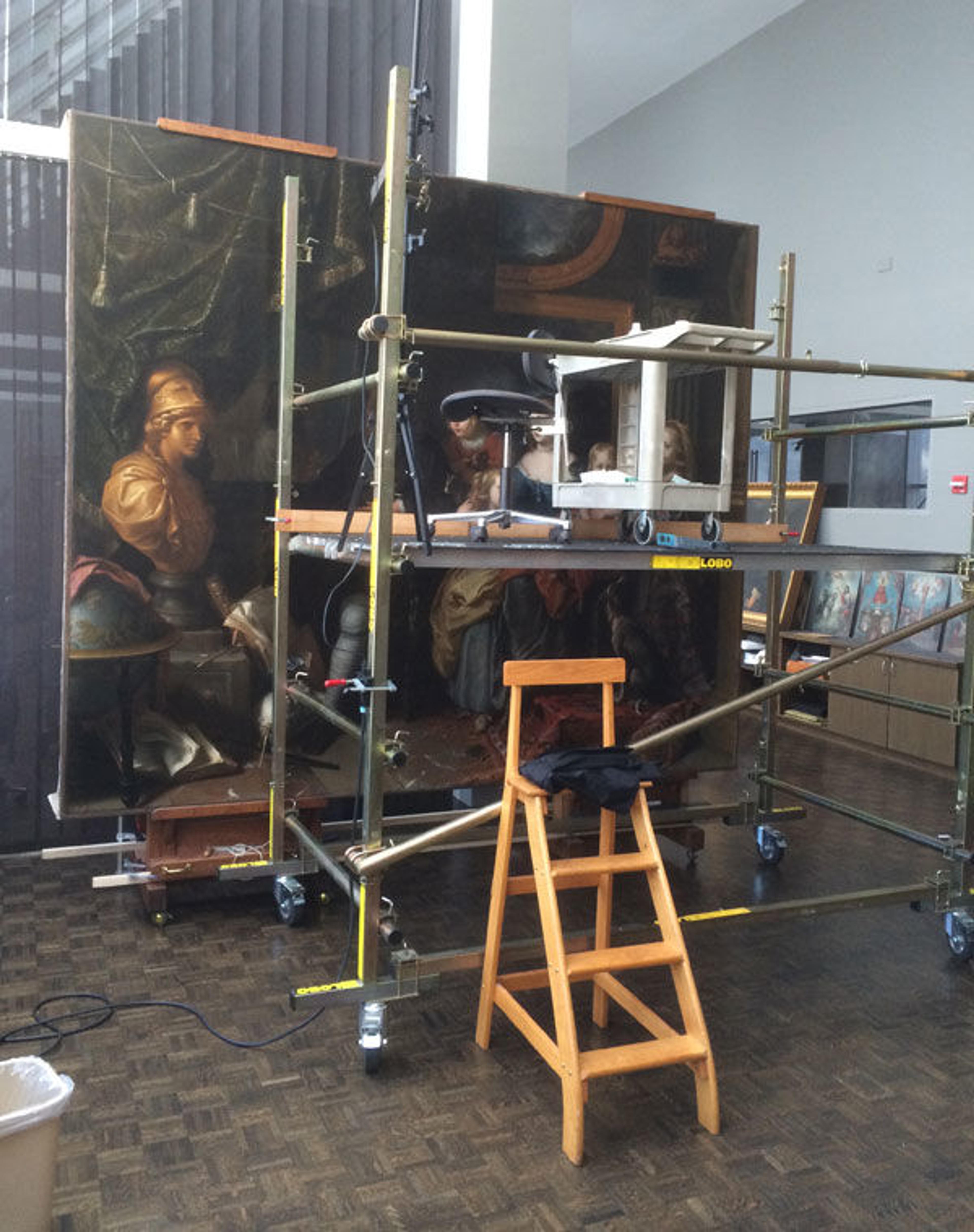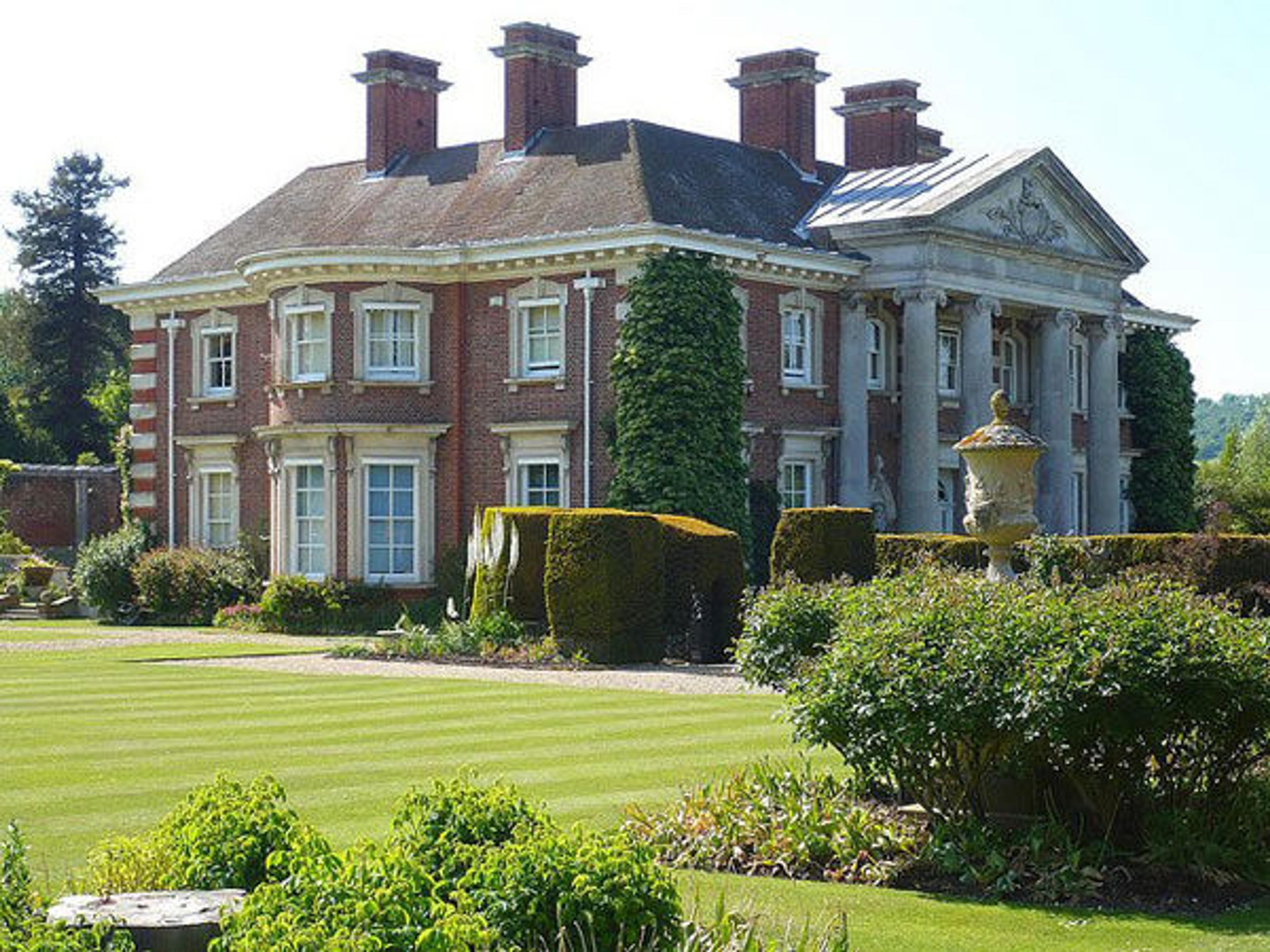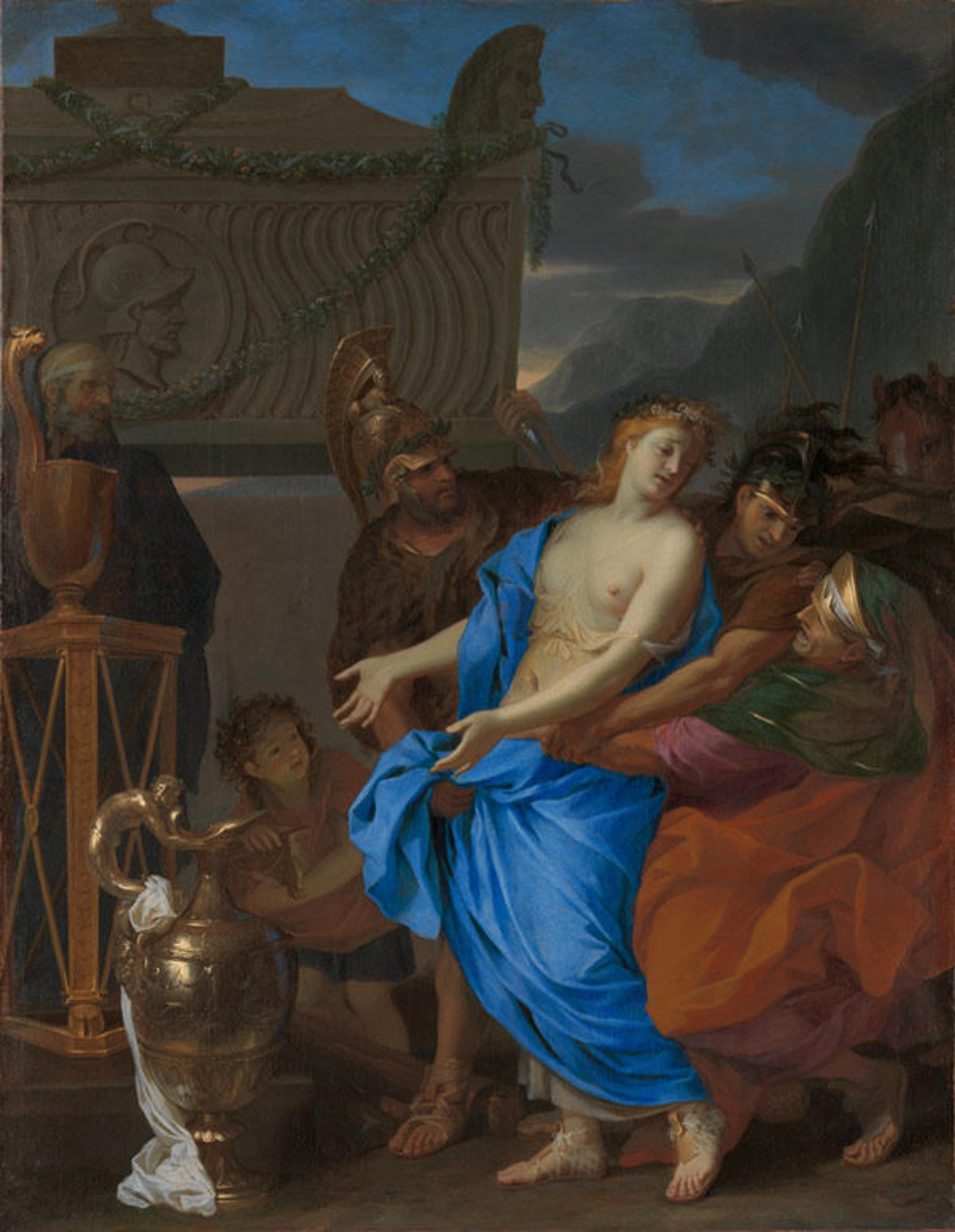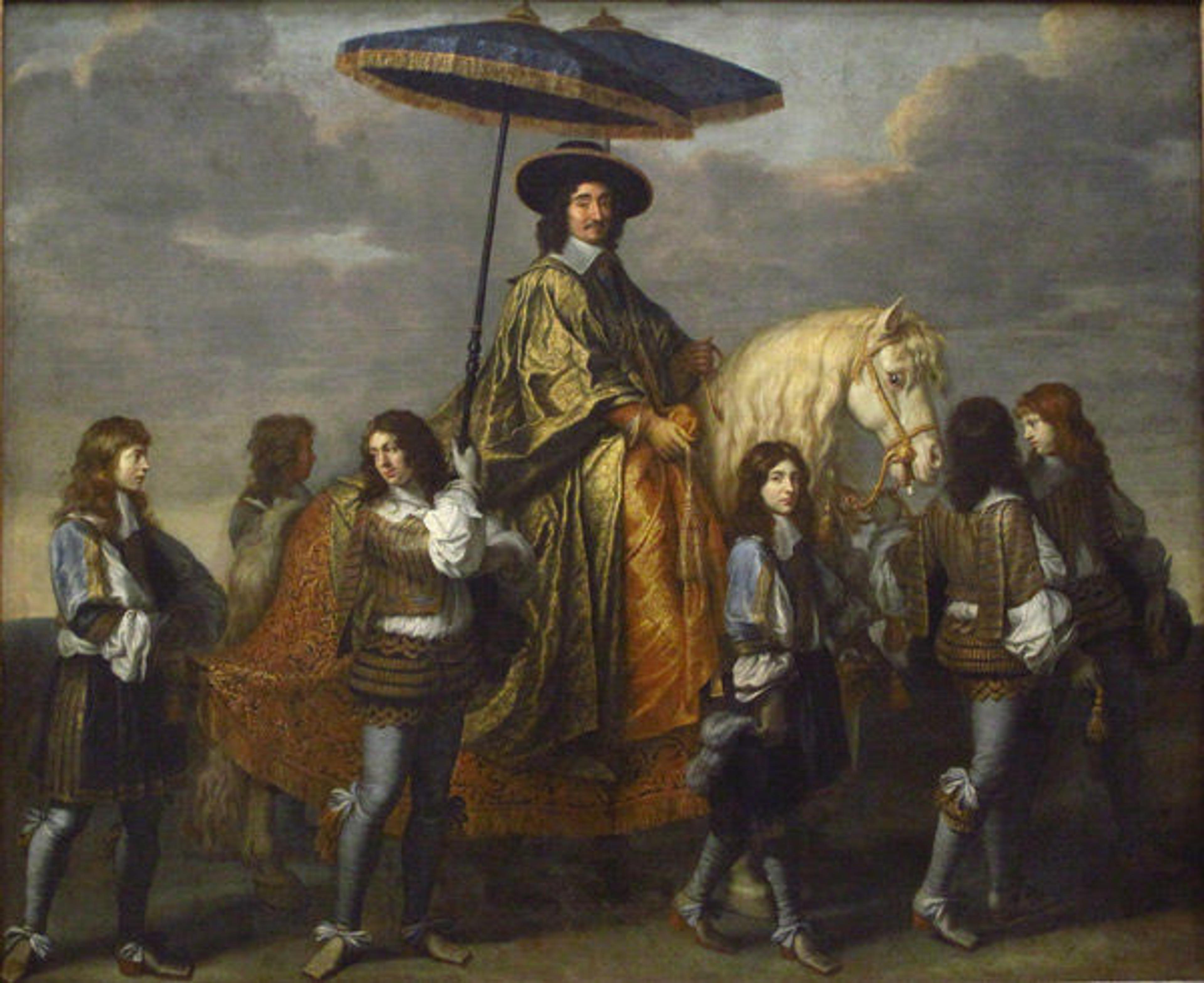The Jabach Portrait: Reflections on an Extraordinary Acquisition

The Jabach portrait in the Paintings Conservation studio, February 2015. Photograph by Keith Christiansen
«Michael Gallagher has been taking readers of this blog series step by step through his conservation work on the remarkable Jabach portrait. So I thought this might be the moment—in the few weeks remaining until its installation in the galleries—to reflect on how we came to acquire this extraordinary picture.»
It goes back to the evening of February 25, 2013. I was in London for a conference, walking back to my hotel after dinner with my wife. It was the evening before my return flight to New York. Checking my emails, I noticed one from a colleague in one of the major auction houses: "Keith, next time you are in London, let me know. I have something important to show you." Despite the late hour, I quickly got in touch with him. There was a scramble, and the next morning my wife and I found ourselves making an unanticipated trip to a warehouse where, propped against the back wall of a large, gray, box-like space, was Le Brun's portrait of the Jabach family. My wife was overwhelmed by the sight, finding the picture completely compelling. A brief conversation ensued about its history, the circumstances of its sale, and the price. That the Metropolitan would be able to acquire the work seemed to me dubious or, at best, a long shot, for apart from the price, could one imagine that a picture of this importance—one that had been in the United Kingdom since 1794—would ever be given an export license?

The manor of Olantigh, Kent, where Le Brun's painting had been since 1832. The work survived a fire that reduced the house to its present size.
Back in New York, I made a call to the director of the National Gallery, London: after all, there was no point in trying to move forward with acquiring the work if the outcome was already scripted and the National Gallery had plans. Much to my surprise, I was told they had another priority and would not attempt to purchase the picture. The door had suddenly opened—or was at least ajar. So I sat down with Tom Campbell, our director, and also met with my colleagues in the Department of European Paintings. All agreed that if this work could be had, it would be one of the Met's great acquisitions.
Negotiations were handled with extreme discretion over the ensuing months, and in September—seven months after I first saw the picture—we found ourselves in the enviable position of being able to make an offer, thanks the same person who had come to our aid so many times over the past forty years and whose name was already attached to some of the signature works in the collection. Our debt to her is very great. Papers were done up, and I presented the picture to the Museum's Acquisition Committee in October for approval (in this case a formality—and a privilege). The next step was the application for the export license, which was being handled by Christie's.
The matter of granting an export license went before the Reviewing Committee of the Arts Council of the United Kingdom in January 2014, with the anticipated postponement of a decision until May 9 to allow a British buyer to step forward with a plan to acquire the work. (See "Painting deemed 'National Treasure' may leave UK" on gov.uk.) By what I believe was a piece of extraordinary luck, a self-portrait by Anthony van Dyck was also up for review at around the same time. Van Dyck, of course, had an active career in Britain and his portraits established the model for the next two centuries. His oval, bust-length self-portrait captured the attention of the press as well as the public. "Saving it for the nation" became a priority, and this, I believe, deflected attention from the Le Brun—to my mind a vastly more important and significant work. On May 9, I received the news that an export license had been granted. (View a summary of the outcome of the Le Brun export case [PDF].)
The painting arrived in the Museum the next month (see the first blog post in this series). I was traveling at the time, and the morning I returned I made a beeline to the conservation studio to see it. (I had been sent the same images you see in that first post.) As I stood before this monumental canvas, I could not quite believe that things had played out the way they had. It had been almost a year and a half since I had first seen the picture in London, and viewed in the daylight of the Paintings Conservation studio, the work seemed even more impressive.
Charles Le Brun had long been on my shortlist of artists we needed in some way to represent if we were to do justice to the history of French painting. I had actually thought we would have to settle for a modest example: the major works are in the Louvre, and the Metropolitan Museum had missed other opportunities—I suppose because of a general prejudice against the Baroque. Remarkably, during this period of negotiations, another quite impressive canvas by the artist appeared on the Paris art market: an early work, done not long after Le Brun had returned from his years of study in Rome. It treats the kind of mythological subject—the sacrifice of Polyxena—for which he was famed. It already had an export license, and I advocated bidding on it, which, with the director's strong backing, we did—successfully.

Charles Le Brun (French, 1619–1690). The Sacrifice of Polyxena, 1647. Oil on canvas; 70 x 51 3/4 in. (177.8 x 131.4 cm). The Metropolitan Museum of Art, New York, Purchase, 2012 Benefit Fund, and Bequest of Grace Wilkes and Fletcher Fund, by exchange, 2013 (2013.183)
We reasoned that if we were successful in getting Le Brun's portrait of Jabach and his family—which at the time was very far from certain—the two canvases would complement each other and allow us to represent this key artist in a way no other museum apart from the Louvre could. You see, the Jabach is not your standard Le Brun. Not by a long shot. He painted only one other picture to which it bears comparison: an immense canvas of his other great patron, Pierre Seguier, the chancellor of France. It's prominently displayed in the Louvre and is illustrated in most histories of French painting. Magnificently robed, Chancellor Seguier is mounted on a richly draped and wonderfully groomed white horse accompanied by pages, two of whom hold umbrellas to shield him from the sun (though it is a typically Isle-de-France cloudy day). I have loved that picture ever since I made my first visit to the Louvre as an undergraduate on my junior year abroad in 1967.

Charles Le Brun (French, 1619–1690). Pierre Seguier, Chancellor of France (1588–1672), ca. 1655–1661. Musée du Louvre
The Jabach is very different, and is, in fact, unique. It is of a wealthy merchant-collector, not a member of the court. To be sure, the room that provides the setting for the family is grand and splendidly appointed (see the September 11, 2014, post "What's That? A Closer Look at Objects in the Jabach Portrait"), and the tasseled curtain drawn back is a motif of Baroque theatricality. But combined with that quality of grave formality that we associate with French painting, there is a counterbalancing sense of intimacy—an engagement with each of the sitters. It never ceases to amaze me how Le Brun has managed to create a sort of diptych. The left half of the composition is dominated by Jabach, who gestures toward the objects of his cultural interests and sits next to a mirror in which the artist he so admired is reflected. To the right is his family, carefully assembled and posed, but each revealing something of his or her character.
These two halves of the composition obviously represent the two worlds of Jabach, and the connection between them is bridged by his young, rosy-cheeked, smiling heir—Everhard Jr., shown clutching his hobby horse and a Cavalier King Charles Spaniel. It is a remarkable achievement. Le Brun never allows his acute attention to detail to detract from the composition as a whole. To a similar end, his brushwork is marvelously varied yet restrained, so as to suggest the textural quality of the various fabrics and the materiality of the objects without deflecting attention from the composition. The picture—a masterpiece of the Grand Manner—is an extraordinary work that speaks volumes about French art and culture at a defining moment in its history and that allows the Metropolitan to tell the story of French painting in a truly exceptional—even unique—way.
Keith Christiansen
Keith Christiansen, John Pope-Hennessy Chairman of the Department of European Paintings, began work at the Met in 1977, and during that time he has organized numerous exhibitions ranging in subject from painting in fifteenth-century Siena, Andrea Mantegna, and the Renaissance portrait, to Giambattista Tiepolo, El Greco, Caravaggio, Ribera, and Nicolas Poussin. He has written widely on Italian painting and is the recipient of several awards. Keith has also taught at Columbia University and New York University's Institute of Fine Art. Raised in Seattle, Washington, and Concord, California, he attended the University of California campuses at Santa Cruz and Los Angeles, and received his PhD from Harvard University.